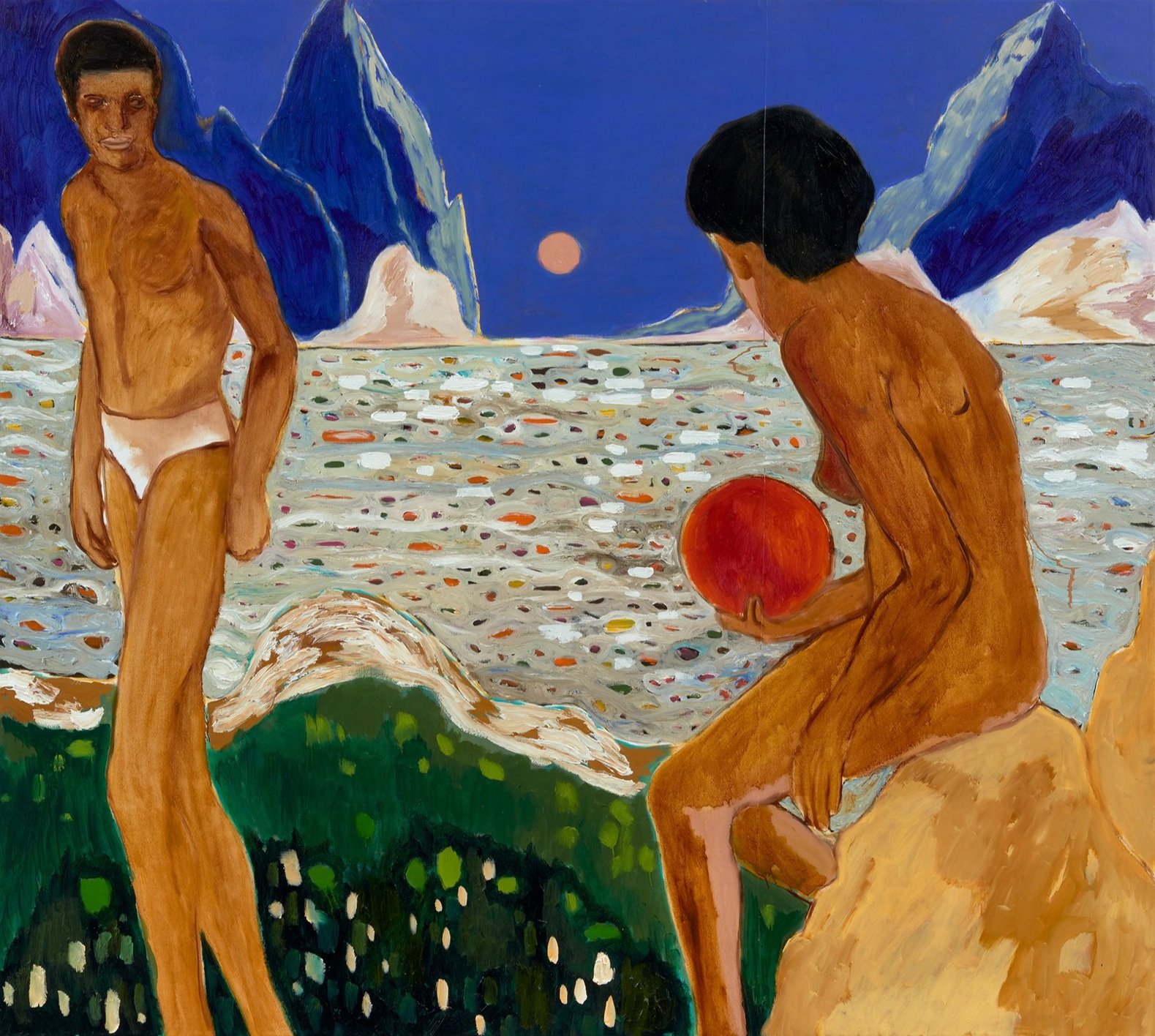Gideon Appah

"It’s important to make paintings that you love."
Could you tell us a bit about yourself and your background? Where did you study?
I grew up in Accra, where I still live and work. I come from a large family, growing up with my mum, my dad and sisters. Later on I went to Kumasi College of Arts, Science and Technology.
As an artist having your first solo show in the UK with Pace Gallery, how has this experience been for you? Did you feel any added pressure or excitement in presenting your work in a new location and with a renowned gallery?
What the gallery gave me was the confidence to go and do and what I do. I didn’t feel pressure at all and felt really at home. And I went on to make the paintings that I love. It’s important to make paintings that you love.
Your paintings have a dreamlike quality that often feels surreal and otherworldly. Can you talk about how you translate your inner self into your work and create these mystical, painterly scenes that defy easy interpretation and categorization?
I am someone who has a lot of imagination. I have to imagine a lot of things in terms of colour and composition. I never set out to make mysterious paintings, but they always result in something very enigmatic. Most of the time this is what happens when you make paintings that are out of place. The figures exist outside of space: you can’t easily identify the settings, and that often makes them look very mysterious. It’s just me and my imagination at work.
The Contemplation, 2023 Photo: Damian Griffiths
How to Say Sorry in a Thousand Lights, Pace Gallery, London 2023
How to Say Sorry in a Thousand Lights, Pace Gallery, London 2023
How to Say Sorry in a Thousand Lights, Pace Gallery, London 2023
Red Sun, 2022 Photo: Robert Glowacki
Night Vision, 2021 Photo: Damian Griffiths
The Sensitivity of Everyday Things, 2021-2023 Photo: Damian Griffiths
Flattened perspective and ambiguous surroundings are features of your work that create ethereal landscapes that seem to exist outside the physical world. How do you achieve this effect and what are you hoping to convey to the viewer through these blurred spaces?
The thing about the flattened perspective is that it is an old idea. What I am trying to do is use perspective in terms of colour. The work has different levels of perspective, sometimes even in terms of the thickness or the depth of the application of paint. There are colours that I use, mostly acrylics, to show a lot of depth, to show thickness, to show intensity. When I layer oil, that’s when I am trying to achieve some transparency within the work. The pigments are applied in layers – layers and layers of paint. So when it gets to a position when I think this is ok, this is when I have something that I can use, I just stick with it.
What artwork have you seen recently that has resonated with you?
Mike Nelson’s show at the Hayward Gallery. This exhibition is so ambitious, and he is so effective at creating different emotions and suspense. It was thrilling.
Tell us a bit about how you spend your day / studio routine? What is your studio like?
The studio faces a farm on the outskirts of Accra and the whole place is scattered with canvases. I have pictures on the walls and that’s where I like to draw. Mostly on Mondays I like to draw and from Tuesday, Wednesday, Thursday and on Friday I start off with painting. I work at night from around 8 pm and into the next day until 10 am.
Is there anything new and exciting in the pipeline you would like to tell us about?
I have a lot of exciting shows coming up. The next show is an exhibition I am curating with Mitchell-Innes & Nash in June of this year.
All images are courtesy of the artist and Pace Gallery
Date of publication: 20/04/23






